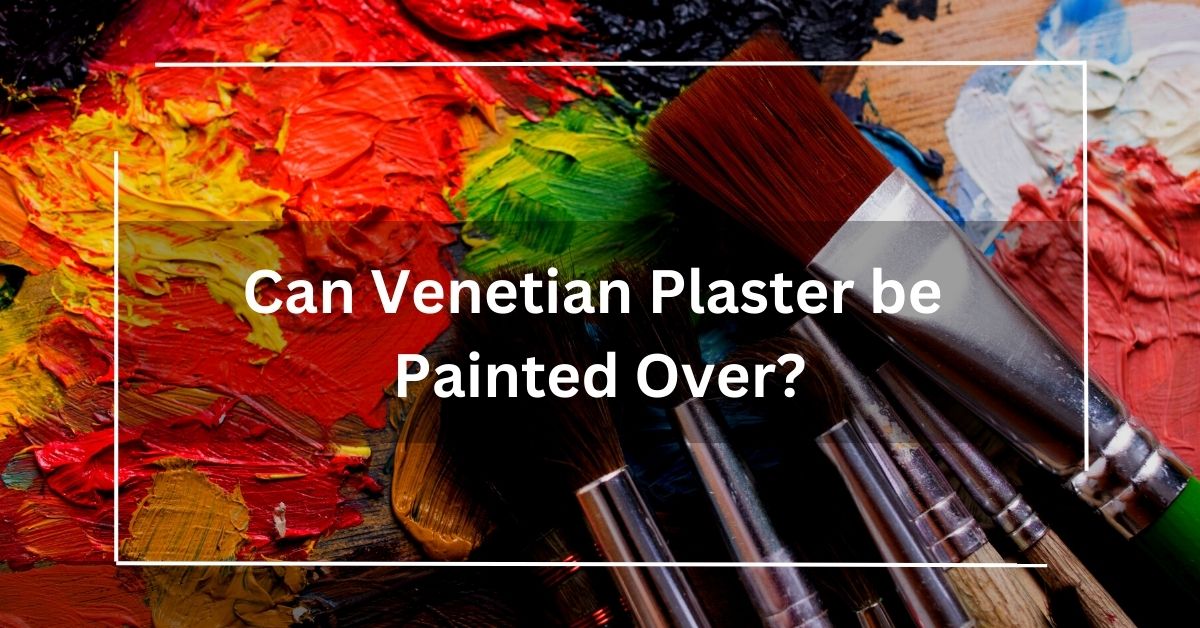The allure of Venetian plaster is undeniable, but can you paint over it without losing its charm? Discover the artful transformation of Venetian plaster in this concise guide.
Yes, Venetian plaster can be painted over with proper preparation. Clean the surface, repair imperfections, apply a bonding primer, choose the right paint, and finish with a suitable sealer. This process preserves the plaster’s elegance while offering a fresh, updated aesthetic for your space.
In this article, we delve into the world of Venetian plaster, its versatility, and guide you on preserving its elegance when painting over it.
The Beauty of Venetian Plaster:
Venetian plaster, often referred to as polished plaster or stucco Veneziano, is a timeless Italian technique known for its exceptional beauty and versatility. It has been used for centuries to adorn the walls of prestigious palaces and grand estates.
The magic of Venetian plaster lies in its ability to create depth, texture, and a soft, luminous quality that is hard to replicate with conventional paint.
This luxurious finish is made from a combination of natural materials, including marble dust, slaked lime, and pigment.
It’s applied in multiple thin layers and then polished to create a smooth, shiny, and translucent surface. The result is a wall that appears to have the depth and richness of real stone.
The Need for a Change:
While Venetian plaster is undeniably captivating, our design tastes can evolve over time. Sometimes, you might feel the urge to introduce a new color, texture, or style to your living space.
It’s perfectly natural, and this is where the question arises: can Venetian plaster be painted over without compromising its inherent allure?
Can Venetian Plaster be Painted Over?
The answer is a resounding “yes.” Venetian plaster is, in fact, quite amenable to painting over if done correctly. The process requires some careful consideration and preparation to ensure that the new paint adheres properly and retains the integrity of the Venetian plaster underneath. Here’s how to go about it:
1. Surface Preparation:
Before you can paint over Venetian plaster, you need to prepare the surface. Start by cleaning the walls to remove any dust, dirt, or residue. A damp, lint-free cloth is usually sufficient for this task. Make sure the surface is completely dry before proceeding.
2. Repair Any Damage:
Inspect the Venetian plaster for any cracks, chips, or imperfections. If you find any, it’s crucial to repair them.
You can do this by applying a layer of plaster patching compound and smoothing it out to match the surrounding surface.
Once the repairs have dried and are smooth, sand them gently to create a seamless transition between the patched areas and the rest of the plaster.
3. Primer is Key:
To ensure that the new paint adheres properly, apply a high-quality bonding primer. This is a crucial step as it helps the paint adhere to the Venetian plaster and prevents it from flaking or peeling over time. Use a primer that is compatible with both the plaster and the type of paint you plan to use.
4. Choose the Right Paint:
When it comes to selecting the paint to go over Venetian plaster, you have a few options. You can use latex paint, acrylic paint, or even oil-based paint.
Each type has its own advantages and considerations. It’s important to choose a paint that complements your desired aesthetic and is suitable for the room’s use.
5. Painting Technique:
Once the primer is dry, it’s time to paint. To achieve the best results, consider using a high-quality roller or paintbrush. Apply the paint evenly, working in small sections and using long, overlapping strokes.
Multiple thin coats are generally more effective than a single heavy coat, as they allow the color to develop gradually and create a uniform finish.
6. Seal the Deal:
After the paint has dried, it’s wise to apply a clear topcoat or sealer. This serves to protect the new paint, adds a level of sheen if desired, and ensures the longevity of your wall’s new look. Choose a sealer that is compatible with the type of paint you used.
Preserving the Elegance:
One of the primary concerns when painting over Venetian plaster is whether you’ll lose the unique elegance that this technique imparts.
The good news is that, when done properly, you can preserve the beauty of Venetian plaster while introducing a fresh color or style.
The layers of Venetian plaster beneath the paint will still influence the wall’s texture and depth. This means that your painted Venetian plaster will have a different look and feel compared to conventional painted walls.
The translucency and subtle variations in the plaster’s surface will subtly shine through the new paint, adding a touch of sophistication to your space.
A World of Possibilities:
When you decide to paint over Venetian plaster, you open up a world of design possibilities. You can choose from an array of colors, textures, and finishes that suit your taste and the room’s purpose.
The old-world charm of Venetian plaster can harmonize with modern or traditional design aesthetics, making it a versatile choice for any interior.
If you ever change your mind or want to return to the original Venetian plaster look, the process is entirely reversible. You can strip the paint and restore the plaster to its former glory.
Tips and Considerations:
- Always take your time when preparing the surface. Proper surface preparation is the key to a successful outcome.
- Experiment with paint samples and small test areas to ensure you’re satisfied with the color and finish before committing to the entire space.
- Seek professional advice if you are unsure about the process or the choice of materials.
- The number of coats and the choice of paint can significantly affect the final result. Don’t rush through this process; give it the time it deserves.
Conclusion:
In the world of interior design, change is constant, and our spaces should reflect our evolving tastes and desires.
The good news is that you don’t have to bid farewell to the allure of Venetian plaster if you decide to transform your living space.
Venetian plaster can be painted over with a thoughtful approach, allowing you to adapt to new design trends while preserving the elegance and charm of this timeless technique.
So, when you stand before your Venetian plaster-adorned walls, don’t hesitate to envision a fresh coat of paint that complements your vision.
With the right techniques and a touch of creativity, you can seamlessly blend the old-world charm of Venetian plaster with the ever-evolving canvas of your home. Embrace the artistry, and let your walls tell the story of your evolving design journey.



